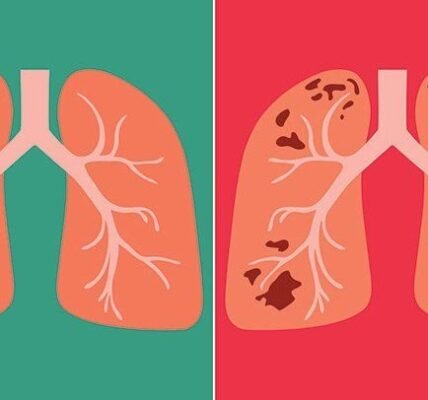Craniosacral Dynamics: An In-Depth Exploration of the Complex Mechanisms Underlying Cranial Osteopathy
Cranial osteopathy, a branch of medicine has gained recognition due, to its comprehensive approach to health and well-being. At the core of this practice lies the concept of dynamics, which is a complex and intricate system that forms the foundation for the therapeutic techniques used in cranial osteopathy.
Understanding Cranial Osteopathy; An Introduction
Before we delve into dynamics let’s establish a basic understanding of cranial osteopathy. Developed by Dr. William Garner Sutherland in the century cranial osteopathy is based on the belief that the bones of the skull including the sutures connecting them have subtle rhythmic movements. Practitioners view these movements as indicators of an individual’s vitality and overall health.
Cranial osteopaths utilize noninvasive manual techniques to assess and potentially adjust these cranial rhythms. The ultimate aim is to restore equilibrium, within the system, which spans from the skull (cranium) to the base of the spine (sacrum). Skilled cranial osteopaths aim to address a range of health concerns, including pain, neurological disorders, and emotional well-being.
The Intricate Network of the Craniosacral System
At the heart of this lies an understanding of the craniosacral system—a dynamic and interconnected network that encompasses the central nervous system, cerebrospinal fluid, and connective tissues. These components are vital. Are enveloped and protected by structures.
Regulation of Cerebrospinal Fluid (CSF)
The craniosacral system heavily relies on the circulation and regulation of fluid (CSF). CSF is a liquid that surrounds and cushions the brain and spinal cord. Within this fluid, there is a pulsation resembling a slow oceanic tide. Cranial osteopaths pay attention to this pulsation during their assessments and treatments.
Protective Membranes, within the Skull and Spine
The brain and spinal cord are enveloped by three membranes known as meninges; mater, arachnoid mater, and pia mater. These membranes play a role in maintaining the integrity and function of the system. Of importance, in osteopathy is the dura mater as it directly connects to the skull bones. If you want to know more about Cranial Osteopathy then you may browse this website.
Cranial Sutures and Connections
In osteopathy, special attention is given to the sutures, which are the fibrous joints that connect the bones of the skull. These sutures are not rigidly fixed; instead, they exhibit natural movements. Cranial osteopaths rely on their trained hands to identify and address any restrictions or dysfunctions, in these connections between the bones.
The Rhythms of Life; Craniosacral Motion
At the core of dynamics lies an understanding of rhythms and movements that permeate the craniosacral system. These rhythms are believed to hold information about an individual’s health condition and serve as a guide for osteopathic treatment.

Primary Respiratory Rhythm (PRR)
The primary respiratory rhythm, commonly known as the impulse (CRI) stands out as the most prominent motion within the craniosacral system. It involves a rhythmic expansion and contraction of both the bones and sutures typically occurring at a rate of 6 to 12 cycles per minute. The CRI is thought to be connected to an individual’s breathing patterns and represents an aspect of their overall well-being.
Long Tide and Mid Tide
Apart from observing the CRI cranial osteopaths also take note of two rhythms called tide and mid tide. The long tide rhythm occurs every 100 seconds per cycle indicating a level of health, with profound significance.
The middle range of tides, which occur every 30 to 40 seconds provides insights, into the movement and liveliness of the sutures in the skull.
Fluid Dynamics and Natural Treatment Approaches
According to dynamics, it is not the role of a practitioner to impose change but rather to listen and support the body’s innate healing processes. By observing these rhythms and movements cranial osteopaths gain an understanding of restrictions or dysfunctions within the craniosacral system.
Practical Implementation of Craniosacral Dynamics
Craniosacral dynamics form the basis for applying osteopathy in a setting. Practitioners employ techniques including palpation, cranial holds, and subtle adjustments to address imbalances in the craniosacral system. The goal of these treatments is to restore the body’s ability for self-regulation and healing.
Managing Pain and Musculoskeletal Disorders
Osteopathy shows promise in relieving pain such as chronic back pain, headaches, and temporomandibular joint (TMJ) disorders. By addressing the system practitioners can indirectly influence tension levels and alignment of bodily structures.
Neurological. Cognitive Wellbeing
The intricate connections, between the system and the craniosacral system are well established. Some proponents argue that its techniques may play a role, in improving neurological conditions enhancing cognitive function, and even supporting individuals with conditions like autism or attention deficit hyperactivity disorder (ADHD).
Furthermore, the gentle and noninvasive nature of treatments makes them attractive to individuals seeking emotional well-being and stress reduction. Many people report feeling deeply relaxed and emotionally balanced after a session.
In the realm of complementary medicine, osteopathy and its core principle of craniosacral dynamics offer a unique and intriguing approach to health and healing. By understanding the mechanisms and rhythms within the system practitioners aim to tap into the body’s natural ability to restore balance alleviate pain and promote overall well-being.
While ongoing research and debates explore the effectiveness of osteopathy its emphasis on the interconnectedness of mind, body, and spirit aligns with the trend towards holistic healthcare.
Whether you’re a believer in cranial osteopathy or maintain skepticism towards it there is no denying that this practice continues to captivate those who seek a deeper understanding of the complexities of human beings’ capacity, for healing.





